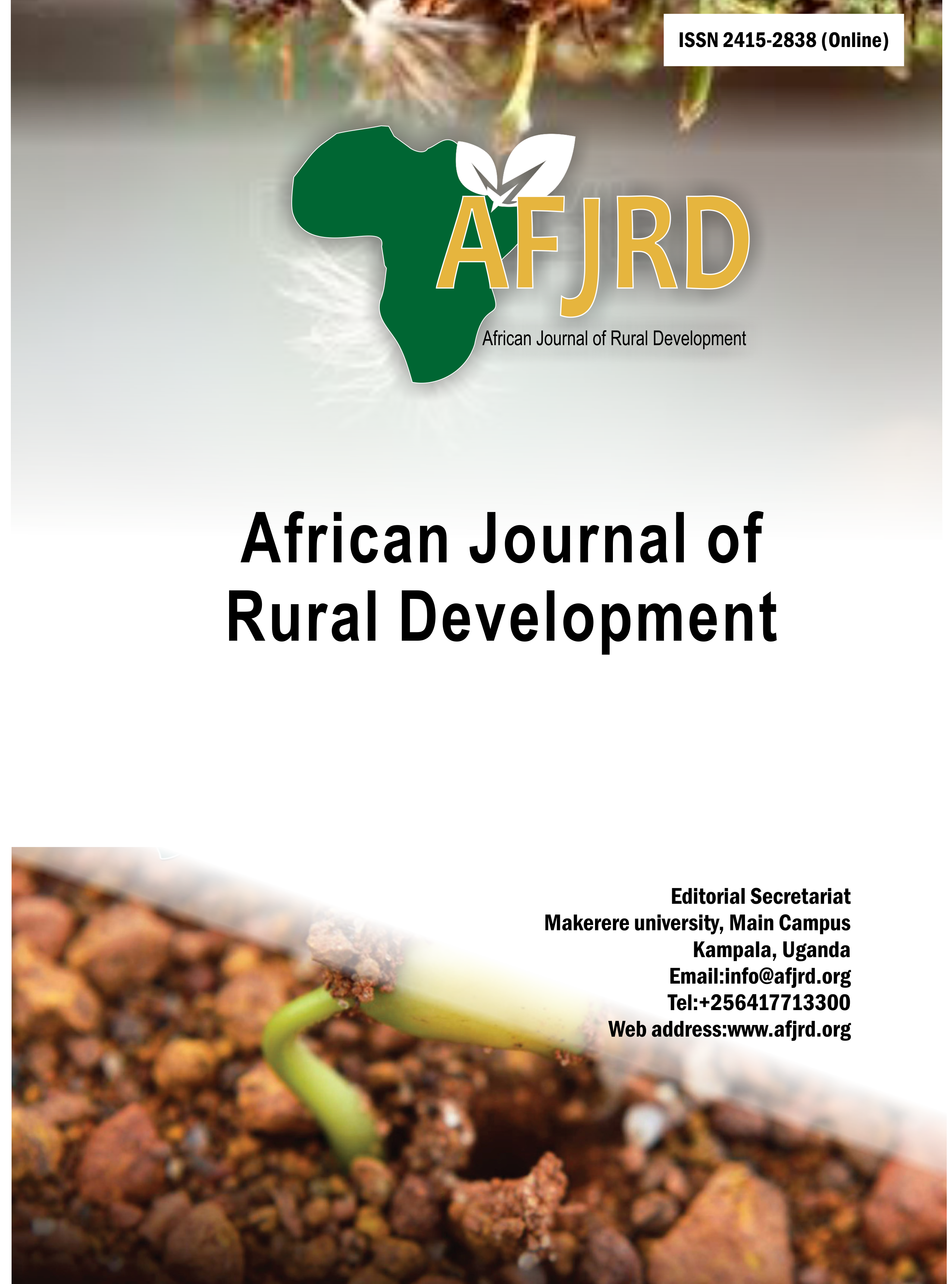Improvement of timber recovery from pine sawlogs using a band sawmill
Main Article Content
Abstract
Band sawmills used in Uganda require operators to manually make sawing decisions; a situation
that is resulting into low recovery given operator’s inability to manually optimize sawing
decisions. This study aimed at providing a decision support system by developing optimal log
cutting patterns. Top diameter, taper, eccentricity and sweep of 150 logs selected at Albertine
Timbernet Sawmill and recovery under the existing milling practices were determined.
Cutting patterns for each log top diameter were then developed using mathematical analysis
and maximum recovery for each log determined. Cluster analysis was used to assign logs
to classes, one way ANOVA was used to test the difference in recovery of the log classes
while the difference in existing and maximum recovery was tested using an independent t-test.
Log classes significantly differed in recovery. Optimal patterns yielded a mean recovery of
41% which was significantly higher than the existing recovery which was 27% indicating a
potential for recovery improvement. Implementation of the proposed patterns, doing analysis
based on revenue and market demands and determining the applicability of the patterns at
other mills are recommended.
Article Details

This work is licensed under a Creative Commons Attribution 4.0 International License.
